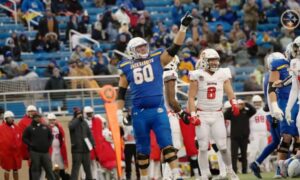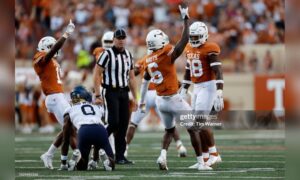Following each game in the 2023 Pittsburgh Steelers season, I will highlight the event or string of events in the game that is the turning point. Not all turning points will be earth-shattering but are meant to give a unique look at how we arrived at the outcome of the game, one that may be hard to see during the live watch.
The Pittsburgh Steelers were bounced from the Wild Card Round of the 2023 playoffs. It wasn’t quite as ugly as some of the Steelers’ recent playoff losses, now having lost five straight, but they dug themselves a 21-0 hole that proved to be too much to overcome against the talented Buffalo Bills.
At one point, the Steelers brought the game within seven points and briefly had a fighting chance to come back, but it was short-lived. It would be fair to label QB Mason Rudolph’s end-zone interception as a turning point as the Steelers fell behind by three scores and delayed their first points on the board. But today, we will be focusing on the drive that ended Pittsburgh’s comeback hopes.
The Steelers were fresh off a 12-play, 75-yard touchdown drive capped by a touchdown pass from Rudolph to Calvin Austin III. A 21-point deficit was narrowed to seven, and everybody started thinking—could they actually do this?
It only took the Bills eight plays to get back into the end zone to put the game out of reach with 6:27 left to play. They had no plays go for zero or fewer yards on the drive with a penalty bailing out their only incompletion. They consistently moved the ball but received some heavy assistance from penalty flags.
Myles Jack, who filled in admirably at ILB over the last month of the season, got called for defensive holding on the first play of the drive. The ball was clearly uncatchable. The referees appeared to be deliberating on whether the ball was catchable, which infers they were initially calling a pass interference penalty, but after a quick chat among the refs they landed on defensive holding.
The NFL rulebook states that pass interference rules apply from the time the ball is thrown until the ball is touched under rule 8, section 5, article 1. It also states an exception to contact made during this time in article 3 stating “contact that would normally be considered pass interference, but the pass is clearly uncatchable by the involved players.”
You be the judge. Was the ball in the air when Jack committed the act of holding or interference? Was it catchable?
WR George Pickens sounded off about this specific call after the game.
But so what—it was just a five-yard penalty and an automatic first down. That wasn’t going to make or break the drive necessarily. But later in the drive, Jack was called for unnecessary roughness while hitting QB Josh Allen, who slid to give himself up as a runner. This play is going to get called more often than not. The league protects quarterbacks, especially when they give themselves up.
The only issue is that Allen did what was perceived to be a fake slide earlier in the game on his 52-yard touchdown run.
Allen approached a group of defenders, slowed up heavily, and leaned his shoulders back behind his feet as if he was going to give himself up before kicking it into high gear for the long touchdown run.
So when Jack was faced with Allen rushing right at him, he made the decision to ensure the tackle and drew the 15-yard penalty. These are split-second decisions. Any hesitation can lead to a huge play for a quarterback with Allen’s capabilities. Jack pointed to the “fake slide” from earlier in the game as his reason for this penalty.
This otherwise would have resulted in a short gain to set up a third down from questionable field goal range. Any time you give up 20 yards of penalties and two free first downs on a drive, the opposing offense will likely score. That is what happened here, and it ultimately ended the Steelers’ chances of a comeback.








